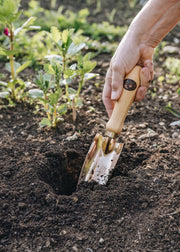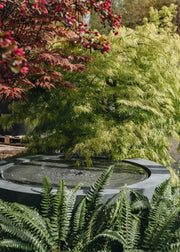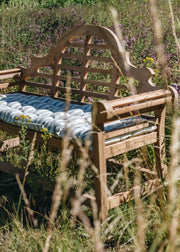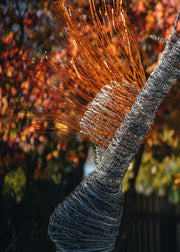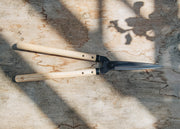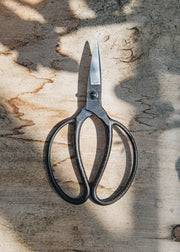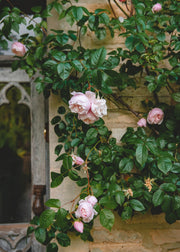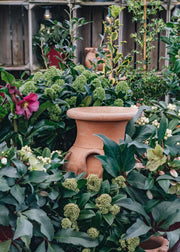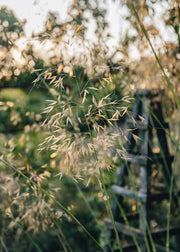How To: Prune the Winter Garden

Once the winter garden begins to thaw and the ground isn’t waterlogged or frozen, it is a good time to head outside with a sharp pair of secateurs to cut down spent flowers and tidy foliage. The impact on an untidy herbaceous border is instant and the compost (assuming the cuttings are not diseased) will benefit from your efforts.
Tools for pruning
We are advised to leave perennial seed heads in place after the autumn for their aesthetic value, and their seeds also beneficial for native birds. Dry, spent flowers look sculptural when caught in the frost, but now they need cutting down. The flowers of sedum, handsome for so long, need attention too, but beware of damaging the basal buds of new growth.


The rightly praised Hellebores, with their long-lived flush of colour in the depth of winter, require scrutiny at this point. The leathery, evergreen leaves that have valiantly provided protection, often obscure the blooms, so cut and clear away any dead or diseased foliage to reveal their full glory
Ornamental grasses, produce plumes of seed heads that also dazzle on frosty mornings (Stippa gigantea is a favourite), but by now they can look battered and will need to be cut down and their mound of foliage tidied up. Avoid being too draconian because the leaves shelter wildlife.


By not deadheading roses you can have the Beauty-and-the-Beast effect of late frozen flowers, but more conventional are the impressive red hips of such roses as Rose Rugosa, or the less dramatic hips of Rosa Rambling Rector. But come January and February it is a crucial time to prune climbing and shrub roses to encourage the best summer blooms. (Please consult our Rose Pruning Guide.)

January is the time to tackle late-flowering clematis. Varieties such as the remarkable Clematis Viticella should be cut down to about 10cm (4in) from the ground to encourage healthy growth in the summer. Another climber, so prevalent in the Cotswolds - the vigorous Wisteria - needs to be pruned twice a year and its second cut is now due. Take all side shoots back to 2-3 buds to tidy it up for the spring and help prevent leaves obscuring the flowers.
So, in January, while the garden appears to be sleeping, it never does, however assiduously we might have ‘put it to bed’ in the autumn.

